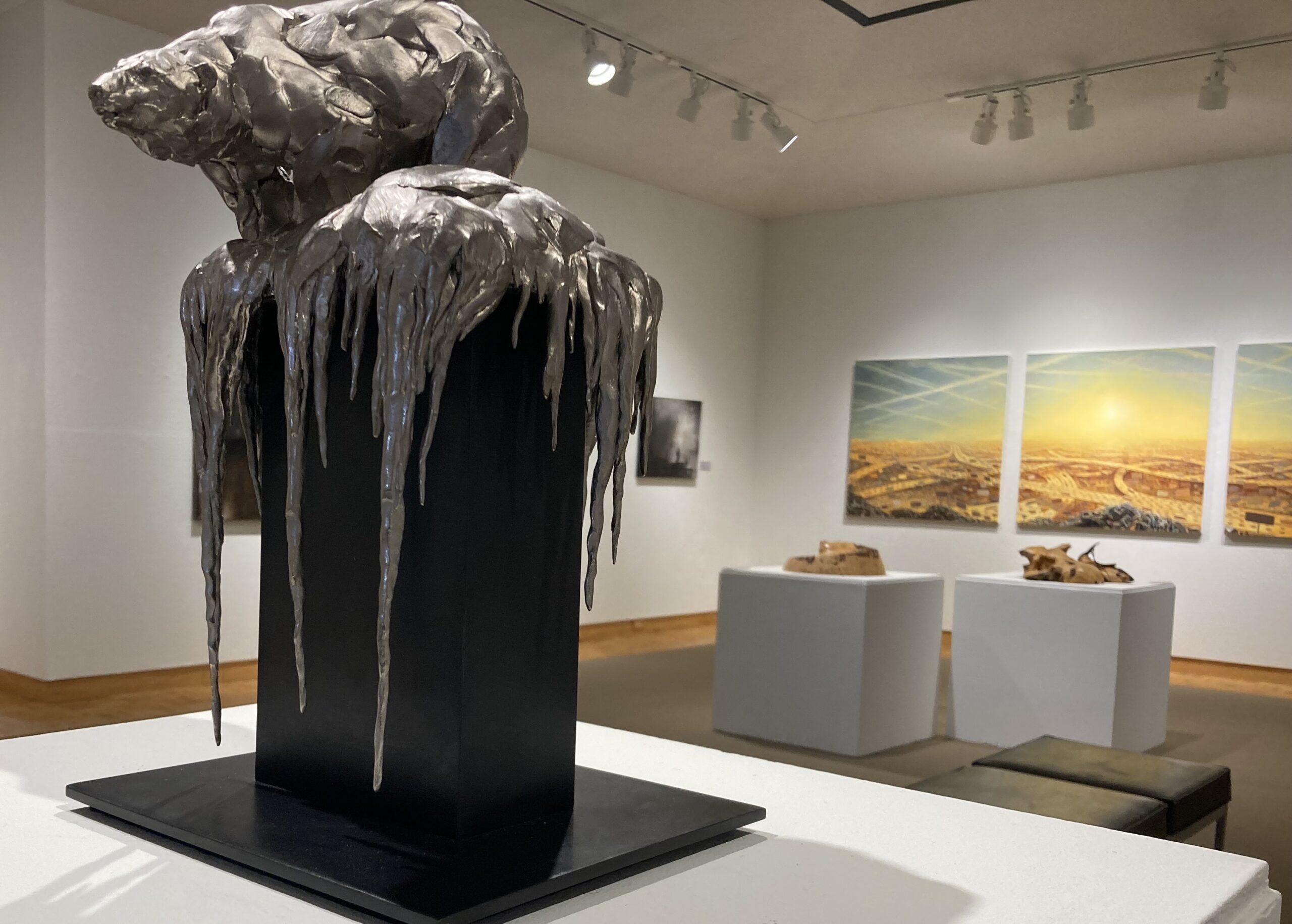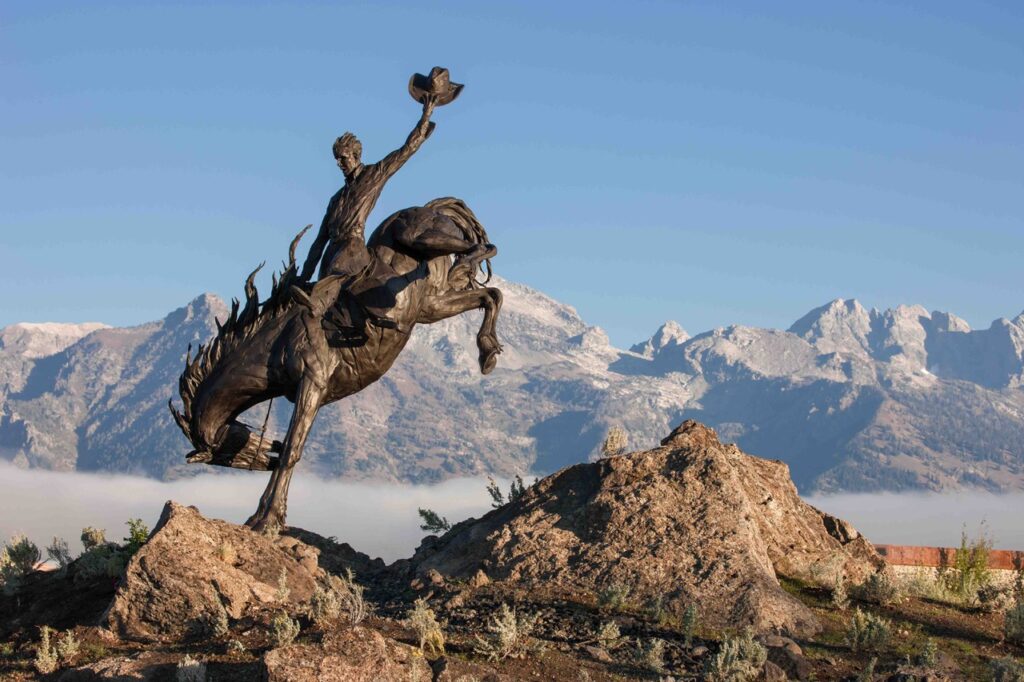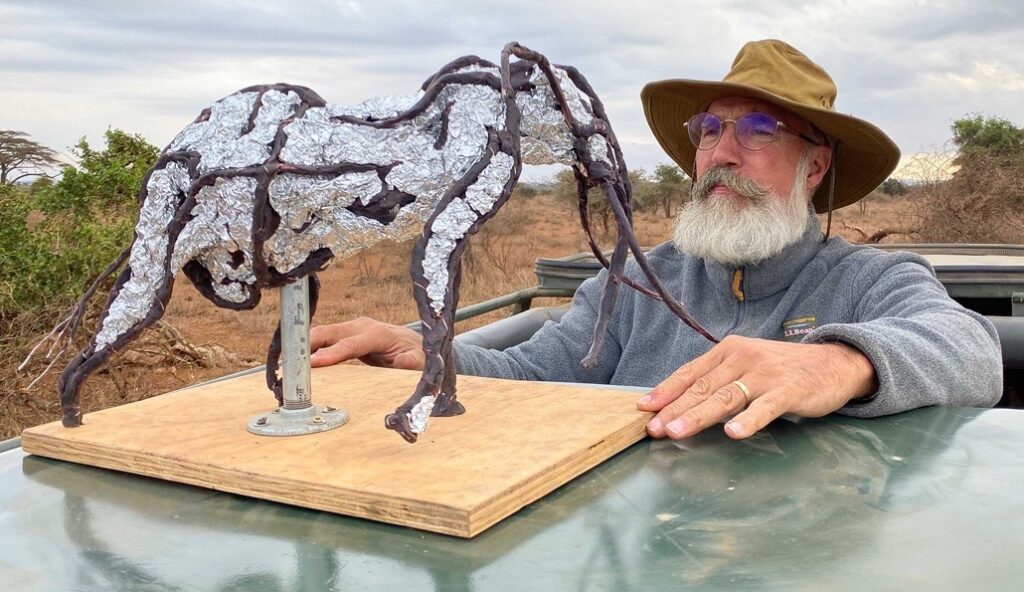Art exhibition showcasing environmental issues on display this week at Quincy Art Center

QUINCY — When Bart Walter’s parents bought three acres on Maryland’s eastern shore for their vacation house, they had no idea that little getaway would lead to a 44-year career of sculpting.
“As a boy, I loved it,” Walter said. “It was full of ducks and geese and swans and herons, all manner of bird life. I could go out and dip up crabs and feed the family. It was a wonderful, intoxicating place to grow up. I’m one of those few people who never grew out of his fascination with animals and art. I think most children start that way. I just never grew up.”
Two of Walter’s smaller sculptures are on display at the Quincy Art Center as part of the traveling exhibition Environmental Impact II, which has 60 paintings, photographs, prints, installations and sculptures. They are different from traditional works of art because they deal with ominous environmental issues from climate change to oil spills, the perils of nuclear energy, drought, wildfires, diminishing water resources and other modern phenomena.
Walter, 66, grew up in Baltimore. He discovered he could make spending cash in high school by combining his artistic talents with his love of the outdoors.
“I was carving wooden sculptures of birds that were highly detailed,” he said. “I was selling them as fast as I could make them.”
Walter wanted to advance those skills in college, but his father, an engineer with a master’s degree from MIT, had other thoughts.
“There was really no discussion about it,” Walter said with a chuckle.
After getting his degree in biology and having thoughts of a research career, Walter thought he’d give sculpting a year and see if he could make a living.
“I picked up my carving tools and got started. I decided that’s where my gift really lay,” he said.
After working in wood, Walter made his name working in bronze.
“I love the expressive surface of bronze. It can capture a fingerprint of fidelity,” he explained. “And a loose gestural approach to a surface seemed like a wonderful way to do a complete 180 from the tightly detailed wood sculptures that I was doing up until that point.”

Walter’s bronze sculptures can be found in public and private collections around the world in museums, galleries and zoos. His largest work, “The Battle of Wills,” is stationed at the airport of Jackson Hole, Wyo.
Working exclusively with wildlife, Walter gets out in the field as often as possible.
“I study them much the way I was trained as a biologist,” he said. “I learn everything I can about them, their anatomy and their behavior and how they interact with other members of their species. And I look for key moments. Something that captures my imagination. Suppose it could be something they habitually do. Come back to again and again. Or it could be something relatively fleeting. I then take a mental photograph.”
After that mental photograph is taken, Walter’s approach is unique. While in the field, he uses wire to make a frame of his subject and then wax to fill out the design. When completed, he brings it to his shop and starts the casting process.

After putting all that work into a sculpture, how difficult it is to sell it?
“It’s not hard at all.” Walter said. “Because I’m on to the next one. People say, ‘So what’s your favorite sculpture you’ve made?’ It’s the next one. I haven’t screwed that one up yet. When I’m imagining how the next sculpture is going to look it is perfect. The ones I’ve completed never live up to my expectations, so I don’t have a problem selling them.”
Time is running out to see Walter’s two sculptures “Climate Change” (featuring a polar bear) and “Climate Change II” (featuring a gray catbird) at The Quincy Art Center. The exhibit concludes April 20.
Miss Clipping Out Stories to Save for Later?
Click the Purchase Story button below to order a print of this story. We will print it for you on matte photo paper to keep forever.

